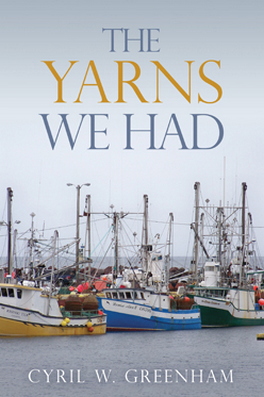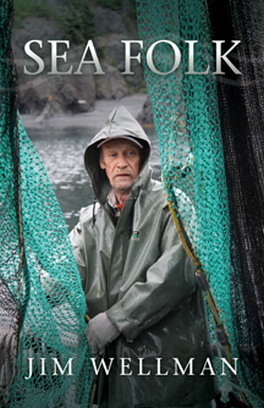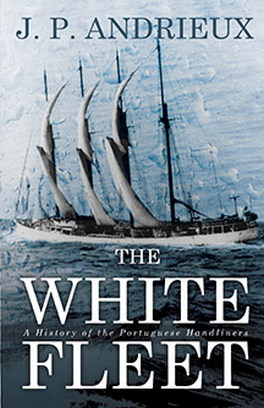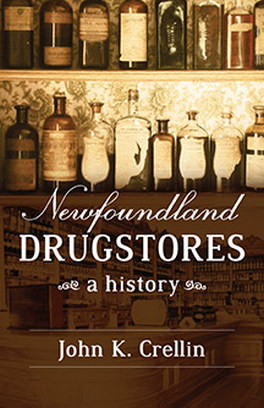 During World War II St. John’s, Newfoundland, played a critical role in the fight against Nazi Germany. Seamen from all over the world sailed to and from the old seaport, chosen for duty because it was closest to Europe and because its people knew both the peril and glory of the North Atlantic. In his introduction to this absorbing collection of stories, Bill Rompkey examines the city’s yeoman service to one of the most famous battles in military history and the effect it had on the people of St. John’s. The stories that follow provide an inside look at life in Newfoundland during this challenging time.
During World War II St. John’s, Newfoundland, played a critical role in the fight against Nazi Germany. Seamen from all over the world sailed to and from the old seaport, chosen for duty because it was closest to Europe and because its people knew both the peril and glory of the North Atlantic. In his introduction to this absorbing collection of stories, Bill Rompkey examines the city’s yeoman service to one of the most famous battles in military history and the effect it had on the people of St. John’s. The stories that follow provide an inside look at life in Newfoundland during this challenging time.
The Ditty Bag
I was only nine years old when the war ended, but I still have vivid memories of that time in St. John’s. We had moved from Fortune Bay to St. John’s in 1938 to a house at 17 Cook Street, near the intersection of Freshwater Road and Pennywell Road. It was a provocative street with a tavern near one end — the Cottage Gardens, a well-known watering hole — and a hostel for seniors near the other — the Anchorage, run by the Salvation Army. Whether there was any direct connection between the two places I’m not sure.
A watering trough for horses still stood at the bottom of Freshwater Road, from where there was a good view of the Church Lads Brigade (CLB) Armoury and farther down Military Road, the Knights of Columbus Hostel. I remember my father taking me by the hand to that spot, where we stood just outside Dr. Polikoff’s office to watch the smoke billow from the blackened ruins that marked the tragedy of the K of C fire.
My father, who had been turned down for active service, was a member of the Air Raid Patrol (ARP), and in our front porch were his bucket of sand, his stirrup pump for fighting fires (they must have been small ones), his arm band, his knapsack, and his brown army helmet. His job, and that of many other men, was to patrol the city checking on suspicious circumstances or events, seeing that lights were properly dimmed in the buildings, and generally helping in civil defence as required. If there was even a sliver of light coming from under your window blinds there would be a rap on your door and an order from the local air raid warden to douse your lights. My brother, Ron, was born during those war years, perhaps, he suggests presciently, as a result of a blackout.
Our own house lights would be dimmed regularly. I remember the wail of sirens announcing a drill, a chilling sound for a young boy. Immediately, wallboard would be put up to the windows and fastened in place with wooden buttons and the lights doused until the all-clear was sounded. Was it just an exercise or was it the real thing? You never knew, and a young boy’s imagination would be at full throttle with a combination of fear and excitement. Was there a submarine in the harbour? Were there planes overhead? We never knew for sure until we heard the welcome wail at the end of the exercise.
Outside in the streets, the lights of the automobiles, still driven on the left, were hooded, their fenders edged with a white band. In fact, the telephone poles had white bands as well in an attempt to prevent pedestrians from knocking their heads during the blackout. Sometimes in the morning children would find the remains of smudge pots that may have been used the night before to simulate the effects of bombing or perhaps to practise extinguishing a fire. The lights of the city were dimmed as well, and the ships in the harbour were on alert, for St. John’s, or Newfyjohn as it was affectionately known by the navy, was the eastern terminus for the St. John’s-to-Derry convoy route, carrying overseas supplies and armaments crucial to the survival of Britain and to support future offensive landings on the continent. The streets would be full of bell-bottomed sailors in white caps, and the blue and khaki uniforms from other countries.
At Bishop Feild College, we boys did our part as well. We bought war stamps and filled up as many books as we could to be redeemed after the war. In the lower grades, our job was to fill “ditty bags” and send them off to the ships at sea. Our mothers would stitch together bags of blue serge with a drawstring top which we would fill with supplies and treats: razor blades, shaving gear, chewing gum, knitted socks or scarves or trigger mitts, and, of course, cigarettes — likely Wings, Players, Sweet Caps, or Lucky Strikes. To buy the cigarettes, we sold bags of peanuts donated by a local service club. The motto was “Nuts to you; smokes to them.” When the bag was full, we would sign our names and addresses on a slip of paper and stow it in the ditty bag before pulling the drawstring tight. Then, somehow, they got shipped off to the Royal Navy (RN) or the Royal Canadian Navy (RCN) at sea.
One night after dark there was a knock at the door. My mother went to see who was there. From the living room I listened to the short hum of muffled conversation in the vestibule. Who was at the door? To my surprise, my mother re-entered the living room followed by a naval rating in full blues. He had received my ditty bag at sea with my name and address stowed inside: Billy Rompkey, 17 Cook Street, St. John’s, Newfoundland. I met his entrance with great astonishment. The Navy had not only come to our harbour and our city, but to our very street! I don’t remember his name or his ship or the conversation that followed. No doubt he was asked to sit by the coal fire in the “grate,” given a cup of tea and perhaps some fruitcake, and stayed to chat about his circumstances and to ask about ours. I was probably too shy to say very much, but I vividly remember the visit. It’s a memory that will never fade. Nor will I forget the small role I had in the Battle of the Atlantic. It was another tie, if any was needed, that bound me, small as I was, to the dramatic events being played out just outside our harbour and on the stormy and dangerous seas of the North Atlantic.
I have other memories of the navy in wartime St. John’s. A friend of the family from Belleoram, Bob Sceans, enlisted as a lower deckhand in the Royal Naval Volunteer Reserve (RNVR) and was a lieutenant before the end of the war. After the war he became for me a personal embodiment of the navy. As well, a frequent visitor to our house was Bill Twiddy, RN, an engine room articifer on HMS Greenwich. He was, from time to time, an escort for my aunt Katherine to dances at the Knights of Columbus. My grandfather, a master mariner, who had come to live with us in St. John’s, had a job as a night watchman at Ayre and Sons on the waterfront. One night he was attacked and beaten by drunk servicemen. I remember my father reporting on the ensuing court case when the judge remonstrated with the suitably chastened visitors on the shame of attacking an old man.
After the war, as a student at Memorial University, I joined the University Naval Training Divisions and later served as an officer in the Royal Canadian Naval Reserve (RCN(R)), so I had some knowledge of warships. These experiences and memories aroused my curiosity. What was St. John’s really like at that time? What was going on? How important was it and what role did it play during the war? I began to ask questions and to read.
[St. John’s and the Battle of the Atlantic] is the result of my research into the role of the port and the role of the people, both military and civilian, as seen through the eyes of those who were there. In the following introduction and stories I have tried to answer the five W’s — who, what, when, where, and why — and give a sense of life and work in the old city of St. John’s.
Bill Rompkey
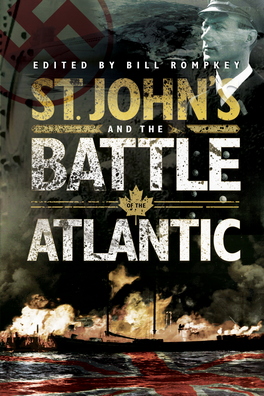
 During World War II St. John’s, Newfoundland, played a critical role in the fight against Nazi Germany. Seamen from all over the world sailed to and from the old seaport, chosen for duty because it was closest to Europe and because its people knew both the peril and glory of the North Atlantic. In his introduction to this absorbing collection of stories, Bill Rompkey examines the city’s yeoman service to one of the most famous battles in military history and the effect it had on the people of St. John’s. The stories that follow provide an inside look at life in Newfoundland during this challenging time.
During World War II St. John’s, Newfoundland, played a critical role in the fight against Nazi Germany. Seamen from all over the world sailed to and from the old seaport, chosen for duty because it was closest to Europe and because its people knew both the peril and glory of the North Atlantic. In his introduction to this absorbing collection of stories, Bill Rompkey examines the city’s yeoman service to one of the most famous battles in military history and the effect it had on the people of St. John’s. The stories that follow provide an inside look at life in Newfoundland during this challenging time.













